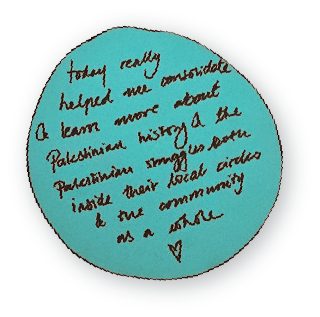Water

Palestinian access to water is severely restricted as a result of Israel’s occupation of Palestinian territories. Rather than utilising their own water resources, which are fully under Israeli control, Palestinians are forced to buy water from Israel at full price. This is largely because the Israeli government hinders the development of infrastructure within the Palestinian territories. The discrepancy in water consumption between Jewish settlements within the West Bank and Palestinians is staggering: some settlements consume around 400 litres per capita per day, compared with 73 litres per capita per day for Palestinians residing in the West Bank. In the event of water shortages, valves supplying the Palestinian communities are turned off, while those of Israeli settlers are not.1 This discrepancy is starker with Bedouin Palestinian citizens of Israel, whose consumption is as low as 10-20 litres per capita per day.2
The Oslo Accords in 1993 set out guidelines for how water would be managed in both the West Bank and the Gaza Strip. This created a situation whereby the Gaza Strip is meant to be entirely self-reliant and is not allowed to depend on water supply from the West Bank, where the major Palestinian water aquifers are located. Existing drills barely allow for the extraction of sufficient quantities of water to meet demand.
The Gaza Strip relies almost entirely on the coastal aquifer for its water. Such a heavy dependency on a single aquifer means that this body of water is over-pumped. 95% of the water coming from the coastal aquifer is unfit for drinking.3 Moreover, Israel’s blockade on the Gaza Strip since 2007 meant that there were chronic shortages of electricity and fuel. This aggravates contamination and other water problems.
Since the beginning of Israel’s genocidal onslaught on Gaza in October 2023, water supply in Gaza has further worsened beyond measure. Israel has damaged or destroyed 5 water and sanitation sites every 3 days.4 70% of all sewage pumps and 100% of all wastewater treatment plants in Gaza are now destroyed.5 Israel’s blockade of external water supply and its systematic destruction of water facilities reduced the amount of water available in Gaza by 94% to 4.74 litres per day per person, threatening to create a health catastrophe, alongside a rapidly intensifying famine and unceasing daily bombardments on Gaza.
References
For resources on water in Palestine, see:
- B’Tselem is an Israeli human rights organisation that aims to document human rights violations in the Israeli-occupied territories, combat denial of the existence of such violations, and help to create a human rights culture in Israel.
- B’Tselem – Issues under the Oslo Accords
- B’tselem –Water crisis
- Palestinian Hydrology Group is the largest Palestinian NGO working to improve access to water and sanitation services, and to monitor pollution and climate change in the OPT.
- UN – Gaza in 2020, a liveable place?
For articles and academic resources, see:
- Amira Hass – The Israeli ‘Watergate’ Scandal: The Facts About Palestinian Water
- Ariela P. Garvett – The Politics of Water
- Ariela P. Garvett – The Search for Water in Gaza
- Fadia Daybes – Water in Palestine: Problems, Politics, Prospects
- Mark Zeitoun – Power and Water in the Middle East: The Hidden Politics of the Palestinian-Israeli Water Conflict
- Jan Selby – Water, Power and Politics in the Middle East: The Other Israeli-Palestinian Conflict
Footnotes:
- https://unispal.un.org/DPA/DPR/UNISPAL.NSF/5ba47a5c6cef541b802563e000493b8c/0aed277dcbb2bcf585257b0400568621?OpenDocument
- Ibid
- http://unctad.org/en/PublicationsLibrary/tdb62d3_en.pdf
- https://www.oxfam.org/en/press-releases/israel-using-water-weapon-war-gaza-supply-plummets-94-creating-deadly-health
- https://www.oxfam.org/en/press-releases/israel-using-water-weapon-war-gaza-supply-plummets-94-creating-deadly-health
Palestine 101
Learn the basics

